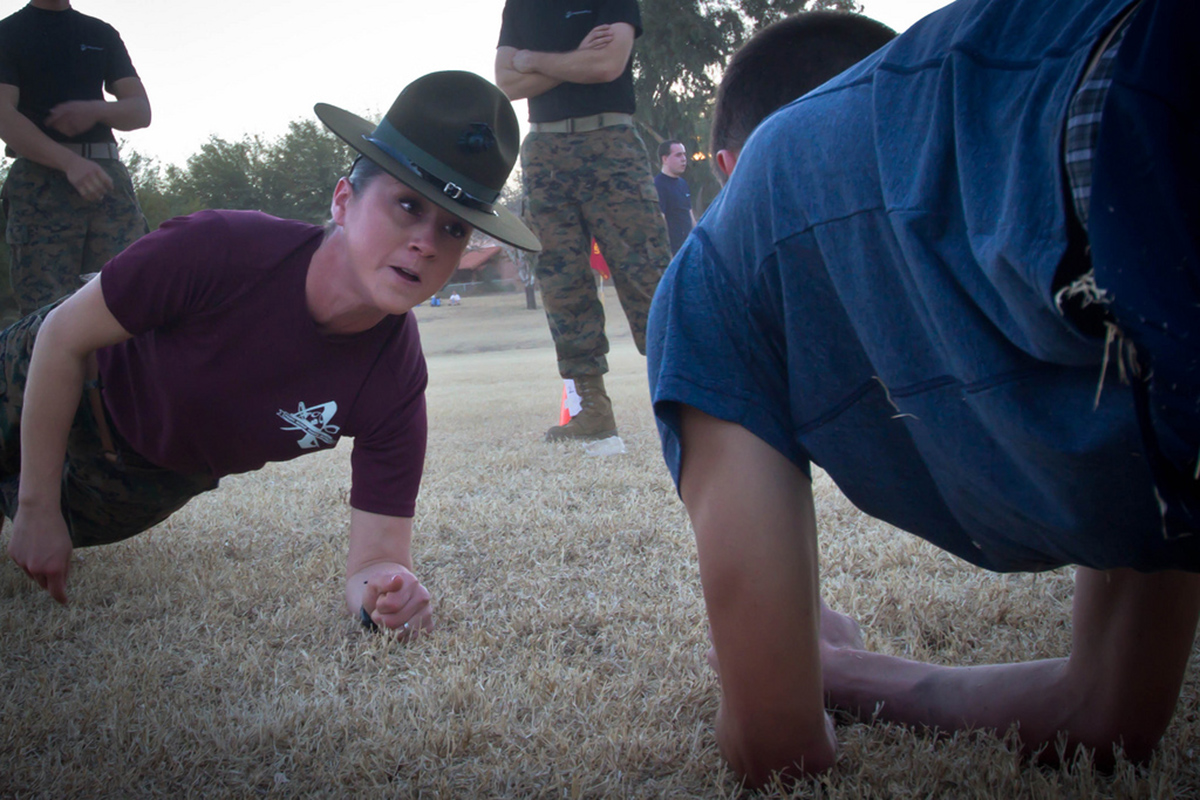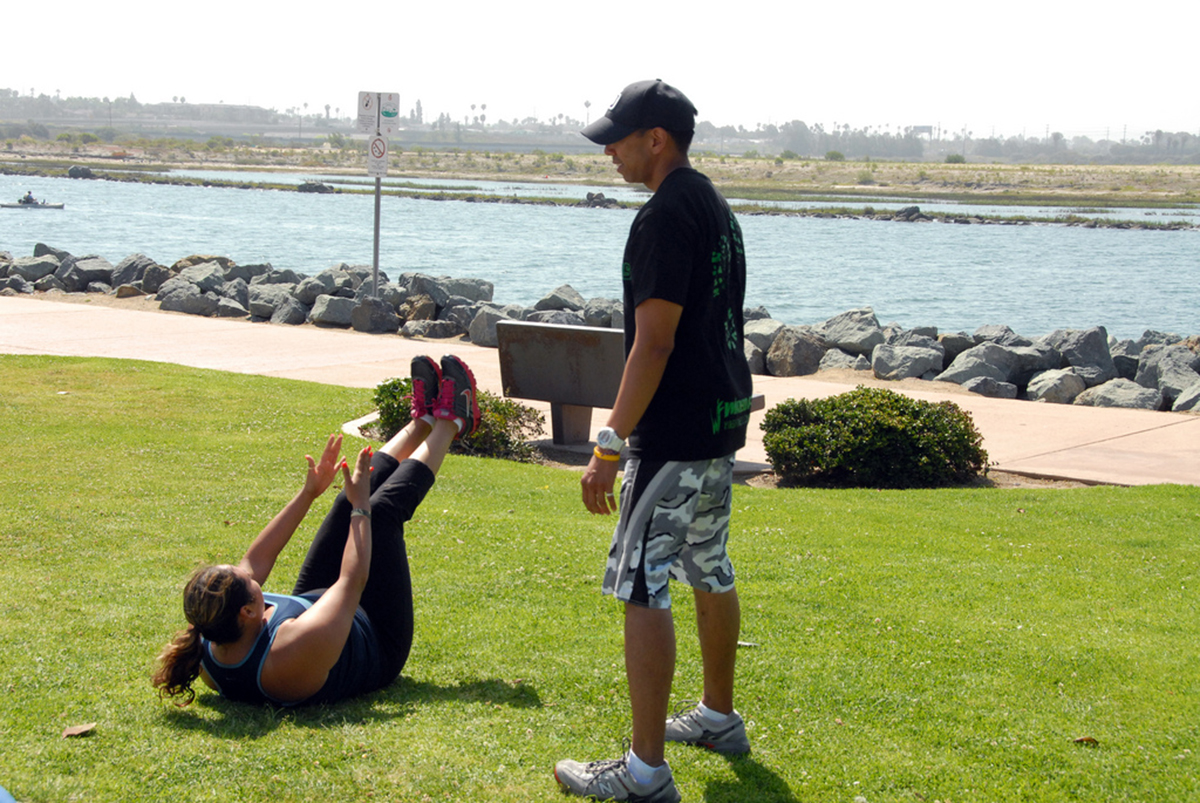There's a direct link between core strength and general strength. How strong do you think the core is of a guy who can squat a thousand pounds? Given that's his core is between the bar, where the weight is, and his legs, where the force is, I'd say it's a safe bet that the answer is: quite strong. And that points the way to a commonly used argument: if I'm training heavy anyway do I need dedicated core work?

Some people get by fine without it, but it's often a good way to get correctives in at the same time, working on straightening yourself up and improving athleticism. And training your core will enable you to make steps forward on your big lifts.
Your core needs to be able to both produce and resist force, and in more than one plane or direction.
We'll start with static resistance:
The easiest way to improve core strength in static resistance is through the use of simple planks. You're statically resisting - staying in the same place against - the tendency of your body to fold in the middle. A basic front elbow plank for about 40 seconds is a good place to start.
Once you have that, advance to more difficult moves. You can try unilateral planks or side planks to increase the amount of force you're learning to resist.
To do unilateral planks, simply take a limb off the floor and hold it in a comfortable position.
For side planks, start on your elbow, and make sure your shoulder is in a stable position.
Too often, people forget that there's a back to your core as well as a front and sides. Try bridges to build a stronger back. Put your feet and hands on the floor and press your body of the ground. Allow your upper back to bend but keep your neck as neutral as you can, and keep some tension in your glutes.
You might find that, for static resistance, static inverse rows suit you better. If a plank is a static push-up, a static inverse row is the same movement pattern with the load on the other side. Set up in an inverse row position and hang for time, making sure you stay tight throughout. Shoot for 40 seconds.
Try arm-to-arm planks, and arm-to-arm row planks for this.
Arm to arm planks simply mean you'll do a plank as normal and move the weight from arm to arm. Put your weight on one arm, and take the other one off the ground. It's not the posture at the end of the movement that you're interested in, but moving through the motion in a stable manner. Keep an eye on your hips. They'll want to roll around from side to side: if you let them the movement will be much easier and you can kid yourself that you're doing it right, but the reality is that you're not really going to make much progress. Move back to a movement you can do with stable hips and shoulders and build on that stability.
See Also: Belly Busting Ab Workout For A Super Flat Tummy
Arm-to-arm row planks simply means doing the same thing but as a row instead of a push-up plank. Use a bar for preference; rings are usually too unstable.
Core Strength Is Not Just About Resisting Force
Additionally to resisting force, your core needs to be able to generate and transmit force.
Try V -sits, Turkish roll-ups, Hindu Push-ups, push-ups and inverse rows for this.

V-sits are done a little like sit-ups. Start by lying on the floor on your back. Raise your legs, straight but with a slight bend in the knee, and at the same time raise your upper body off the floor. You should resemble a 'V' shape at the top of the movement, with only your butt on the floor. Return to the start position and repeat.
Turkish roll-ups are really a kettlebell exercise, though they work fine with bodyweight too. Start lying full length on your back, with your hands together over your face, fingers pointing to the roof. Keep your hands together and pointing upward throughout, then roll yourself off the floor - imagine you're doing it one vertebra at a time. At the end of the movement you should be sitting upright with a straight, erect back, legs outstretched and your hands overhead.
Hindu push-ups consist of moving from the downward dog to the scorpion or upward dog positions in yoga. A million YouTube videos are eager to offer assistance here: The key is to be mindful of core positioning as you do them.
It's also important for your core to be able to offer dynamic, multiplanar resistance. To build your core's ability to resist those kinds of force, try bear walks, spiderman crawls, and kickthroughs. They'll improve your core's ability to transmit and resist force simultaneously through multiple planes, which is what you'll need form it in real life.
For bear walks, put both your hands and feet on the floor and walk in a four-legged manner. There is more to it - but not that much more. Bear walks are a good way to get a pair of dirty hands, but otherwise they're excellent!
Spiderman crawls are more demanding for the core as well as putting some strain on your shoulders. Start in a pushup position, and walk your left hand forward as you move your right foot forward and out. You should end up in a position that reminds you of your friendly neighbourhood... you get the idea. Again, these are a popular exercise and there are plenty of detailed videos available.
Kickthroughs can be done from downward dog or from a spiderman or plank position. You'll put your weight on your right hand and left foot and move your right foot through and out until you're kicking though with your right foot, your weight supported by your right hand and left foot, left knee bent. Retract and return to the original position, and do the same thing on the other side.
For hollows, start lying on your back, with your legs off the floor, bent at the knee, and your arms up in front of you. Fire up your core and raise your upper body a little off the floor but keep your lower back flush to the ground. Extend your legs slowly and reach your arms up overhead, making sure that your low back stays vacuumed to the floor - this is the 'hollow' that's the point of the whole exercise. Gradually improve your ability to move your hands and feet further apart without 'unhollowing'.
For lever work, you're going to take that posture to an overhead bar or a pair of rings. Hang vertically, pull up and tuck your knees, then lay back until your arms are straight and your back is parallel to the floor. Now extend your legs. At this point, most of us discover that we don;t really have that strong a core...
See Also: What Is Cross Fit And What Are The Benefits?
Go back to the easier exercises and build up to it!
If you thinks this is helpful, or there's something you wish I'd included, get in touch with me in the comments section below!
- Photo courtesy of Tyler J. Bolken by Flickr: www.flickr.com/photos/tylerbolken/8769007943
- Photo courtesy of Port of San Diego by Flickr: www.flickr.com/photos/portofsandiego/7244589950


Your thoughts on this